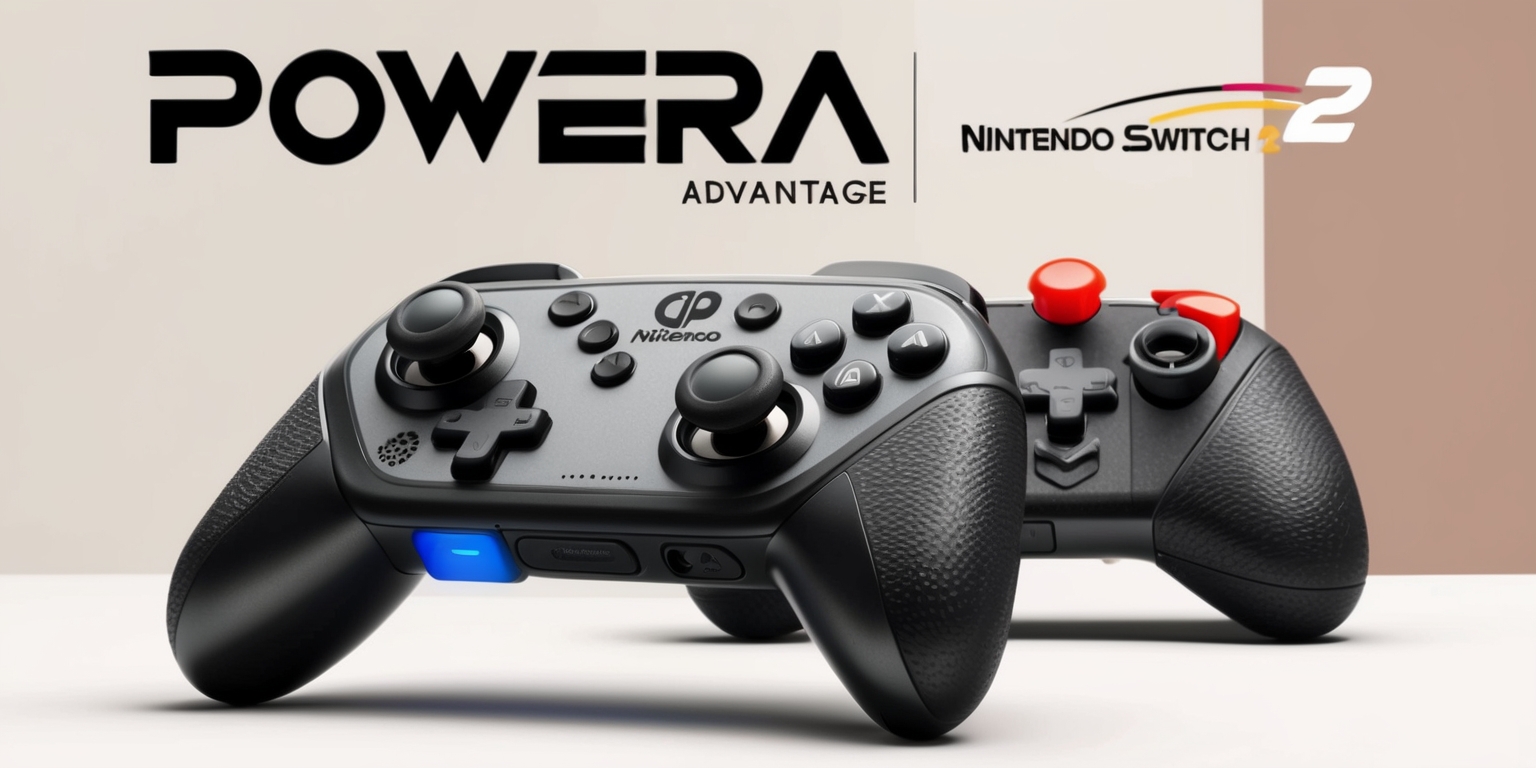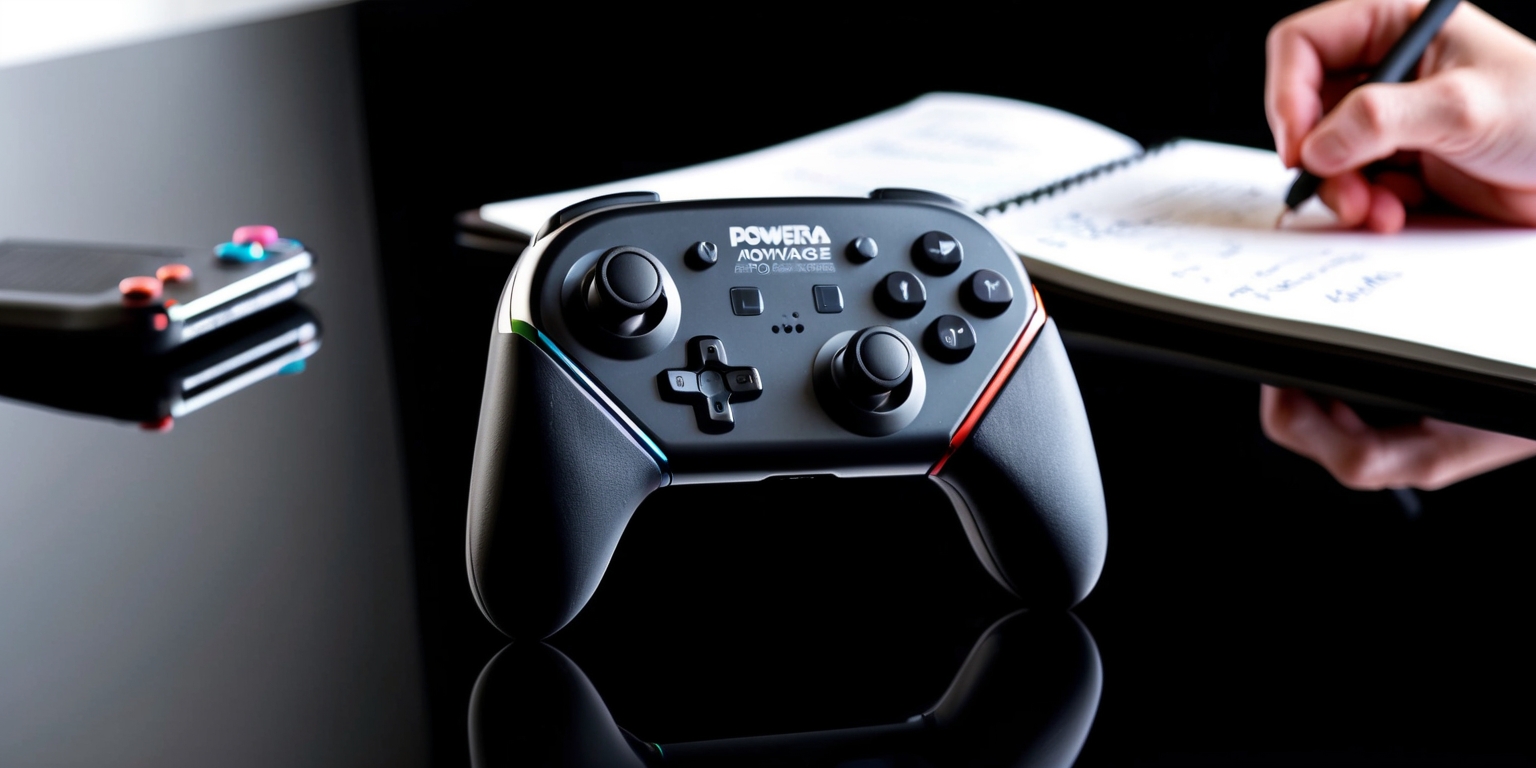PowerA Advantage Nintendo Switch 2 Controller: Balancing Budget and Function in Gaming
Aug-21-2025

The world of gaming controllers is full of options that promise a balance between performance and price, yet every now and then, a new offering forces us to compare what we truly value in a gamepad. The PowerA Advantage Nintendo Switch 2 controller is one such offering—a budget-friendly alternative that dares to challenge the supremacy of the official Pro model. When you weigh affordability against subtle differences in design and performance, it becomes essential to examine all aspects of the controller in depth. By taking a closer look at the materials, build, functionality, and the overall gaming experience offered by each model, we can uncover a comprehensive portrait of what this device brings to the table.
Refined Aesthetics and Constructed Design
The PowerA Advantage controller immediately strikes you with its distinct approach to design. Unlike the impeccably finished official model that exudes solidity with a smooth matte surface, the Advantage controller utilizes materials that feel noticeably lighter and more cost-conscious. Its plastic exterior carries a slightly grainy, creaky texture which contrasts with the plush responsiveness of the pro version. Even though the overall build is less refined, there is an inventive twist in its rear panel design, where a raised textured grip adds comfort during long sessions. Every detail reflects a decision to balance affordability with functionality, where the visual and tactile cues speak volumes about the compromises made in its construction. This aesthetic divergence sets the stage for a deeper comparison of performance and usability.
Material Quality and Construction Integrity
Delving further into the build quality of the Advantage controller, it becomes apparent that its materials contribute directly to the overall feel and performance. The lighter weight and hollow construction are immediately noticeable, especially when engaging with the buttons or thumbsticks. Each press on the shoulder or directional buttons reinforces the idea that the controller is built from less robust components than those found in premium counterparts. However, the design does include smart elements such as the textured rear grip, which offers a comfort factor during prolonged use. While the construction may not satisfy those looking for a premium tactile experience, it does manage to deliver on a consistent performance basis for a budget-friendly alternative. The materials reflect a conscious cost-saving initiative while still aiming to provide an essential, if less opulent, gaming experience.
Ergonomics and Interactive Comfort
Comfort during gameplay is a key determinant in any controller’s success, and the Advantage controller approaches this challenge in its own unique manner. Due to its lightweight construction, every interaction—from pressing face buttons to maneuvering thumbsticks—translates into a distinctive tactile feedback that some users may appreciate during intense gaming sessions. However, when compared to the official model, many will find that the official device provides a more balanced distribution of weight and a refined feel that absorbs impact more gracefully. Despite its design quirks, the Advantage still manages to offer sufficient ergonomics that invite longer play sessions. The tactile differences extend not just to the button feedback but also influence how a user repositions their grip, with the alternative navigation button layout introducing a new but debatable approach to game controller ergonomics.
Reimagined Button Layout and Navigation

Among the most remarkable choices within the … design of the Advantage controller is its unconventional placement of navigation controls. Instead of following the familiar positioning of buttons like the +/- and home keys, this arrangement relocates them near the base of the device. For some, this design shift introduces a learning curve as muscle memory from standard layouts is challenged. Players may find themselves inadvertently tapping on undesired areas until a new grip is established. Though unconventional, this layout does offer the benefit of a rear grip that encourages a firmer hold during extended gaming sessions. The repositioning is reflective of PowerA’s attempt to differentiate this product in a competitive market by experimenting with usability concepts, even if such changes could be polarizing compared to the seamless integration found on more established models.
Feature Set and Pricing Dynamics
An intrinsic part of evaluating any gaming accessory is understanding the spectrum of features it provides relative to its price. At $39.99, the Advantage controller factors in essential functionalities such as programmed back buttons and rumble effects. However, it notably lacks wireless connectivity, motion controls, and other high-end features that some mid-range alternatives or even models costing a bit more can provide. The integration of Hall effect thumbsticks is a particularly interesting choice, promising enhanced precision despite not matching the refined resistance and tactile feedback of premium options. This selective feature set creates a clear dichotomy in the market where budget constraints lead to compromises. While the streamlined design may suffice for casual gaming and be ideal for players on a tight budget, those desiring a more comprehensive feature suite might lean toward alternatives that offer cutting-edge technology and thorough integration with the Switch 2’s advanced interface.
Thorough Technical Performance Assessment
Performance in gaming controllers is critical, and the Advantage controller holds its own when measured in terms of responsiveness and connectivity. Its wired connection ensures reliability and minimal latency during intensive gaming, matching the standards expected in competitive arenas such as racing or action titles. The Hall effect thumbsticks present an interesting balance—offering precise, if somewhat looser, control in comparison to the premium model’s finely tuned feedback system. A significant aspect of its performance includes the manner in which button mapping and stick resistance are handled. Although the D-pad and face buttons require more deliberate force during actuation, potentially impacting rapid-fire scenarios, they remain effective for casual play. This solid technical performance helps secure the controller’s place as a viable alternative for gamers who prioritize cost without a substantial compromise in playability.
Thumbstick Accuracy and Directional Response
Crucial to any controller’s gaming experience is the configuration and sensitivity of its thumbsticks. The Advantage controller’s Hall effect sticks offer an intriguing approach with a level of precision that brings forward subtle advantages, particularly in games demanding exact movements. In practice, these thumbsticks exhibit a noticeably looser resistance compared to the premium counterpart, which can sometimes translate into a faster response when rapid adjustments are needed. However, the absence of a more polished tactile feedback that gamers appreciate in high-end controllers means that while precise, the overall feel might not conjure the same sense of satisfaction during extended play. The directional pad also echoes this sentiment, as its design invites a heavier feel, suggesting a more deliberate input methodology. These characteristics combine to offer nuanced control that is appreciated in the context of automatic and competitive gameplay, albeit with slightly different dynamics than premium offerings.
Advanced Audio Integration and Customization
The Advantage controller’s inclusion of an audio system interface represents a notable feature amidst its array of functionalities. With a dedicated 3.5mm audio jack and an accessible 'Audio' button, users are given the option to engage with multiple EQ settings on-the-fly—a convenience especially relevant for those using traditional wired headsets. This design allows gamers to select preset sound modes such as Standard, Bass Boost, or Immersive, enabling a tailored auditory experience that complements the gaming action. Though many modern headsets come equipped with their own volume controls and equalization features, having this functionality embedded directly in the controller simplifies the user setup process. This integration demonstrates a thoughtful approach to multi-sensory gaming, merging tactile and auditory controls into a unified experience that resonates well with players looking for streamlined customization without the need for additional peripherals.
Comparative Dynamics with Premium Counterparts
When pitched against the acclaimed Switch 2 Pro Controller, the differences become more apparent with every interaction. The official model provides a substantial tactile experience through its substantial weight, robust button response, and a more intuitive control layout. Every press and trigger on the premium controller delivers a refined feedback that enhances user immersion, a quality that the alternative Advantage controller attempts to capture but naturally falls short of due to inherent design compromises. The premium offering further integrates a suite of advanced features including wireless connectivity, motion detection, and an improved haptic feedback system that collectively create a more seamless gaming interface. Such contrasts highlight that while the Advantage model serves as an accessible option with its own merits, serious gamers who desire peak performance and an unabridged experience might find the official model to be the more compelling choice.
Economic Considerations and Consumer Decision Factors
At its core, the decision to opt for the Advantage controller versus its higher-priced counterpart rests on weighing economic practicality against the luxury of premium features. The $50 price differential is not insignificant, prompting consumers to question the tangible benefits that come with a higher investment. For those who find themselves leaning toward wired controllers and who do not require the additional amenities such as motion controls or wireless freedom, the Advantage offers a straightforward cost-saving alternative. The affordability factor makes it an attractive entry-level choice, especially for new gamers or those who feel their gameplay does not demand state-of-the-art technology. However, the trade-offs in build quality, feature set, and the ergonomic adjustments required might deter more seasoned enthusiasts. This cost-performance analysis demands that each customer reflect on personal priorities, balancing budgetary limits with the desire for a comprehensive gaming experience without additional frills.








